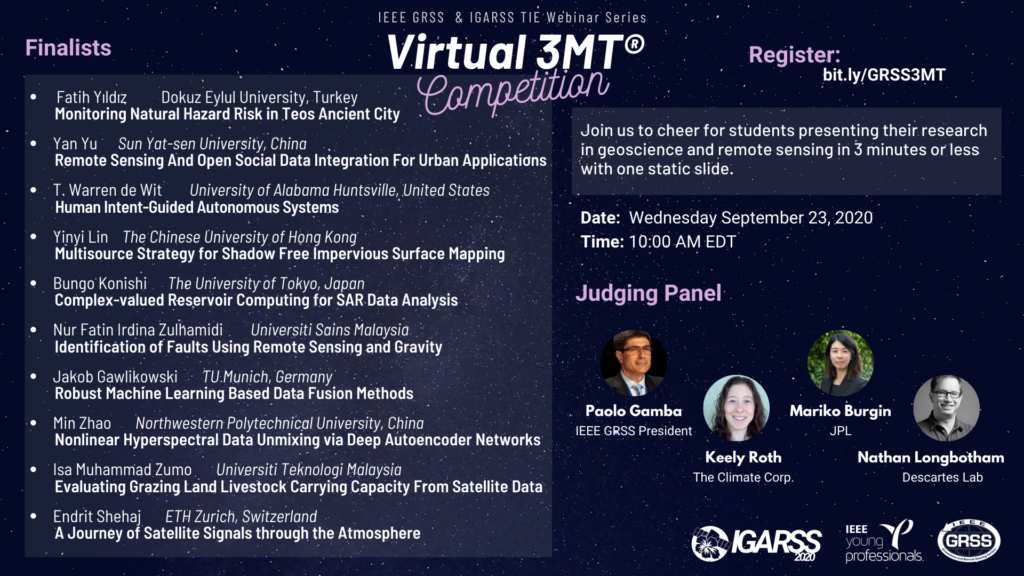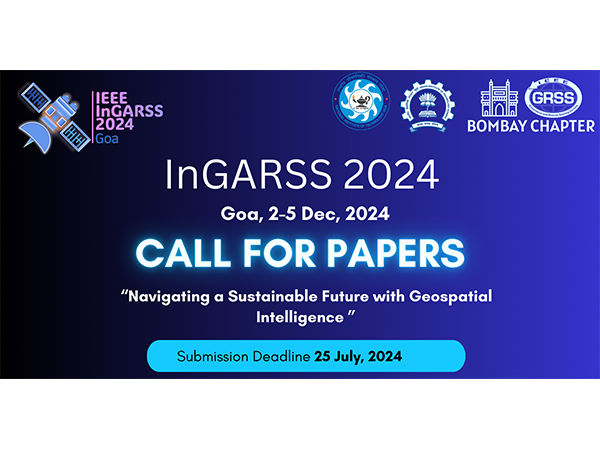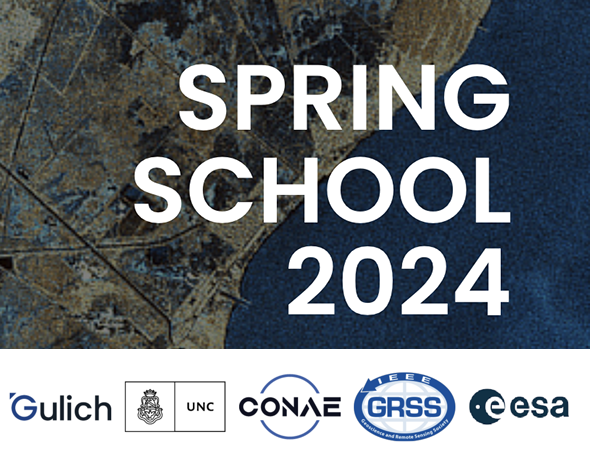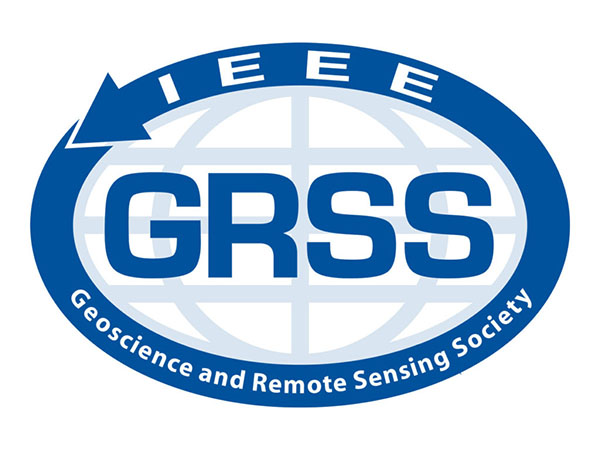The IEEE Geoscience and Remote Sensing Society is organizing a virtual 3MT™ competition at the International Geoscience and Remote Sensing Symposium IGARSS 2020.
3MT®, founded by the University of Queensland in 2008, is an academic competition that cultivates students’ presentation and research communication skills and challenges them to describe their research within three minutes to a general audience with one static slide.
This year, the competition will be virtual and open to all students in a research-based masters or doctoral program worldwide, not necessary presenting a paper during IGARSS.
If you want to take the challenge and participate to the competition, submit a 3-minute video describing your thesis and research topic to a video platform (YouTube, Youku Tudou, etc.) or to a site accessible only by the evaluation committee with a private URL. The judging criteria for this phase are presentation skills (40%), scientific quality (40%) and originality (20%) of the topic presented. Any visual aid is permitted only for this phase of the competition
The top 10 submissions will be selected and invited to the final round of the competition, which will be online to an audience and adjudicating panel on September 23, 2020 at 10:00 AM Eastern Daylight Time.
The top 3 presentations as judged by the panel will be awarded attractive prizes to be announced soon and a certificate from GRSS.
For the initial phase, please submit your videos by September 6, 2020, through this form here.
If you have any questions about the competition, please send us an email at 3mt.grss@gmail.com
Timeline of Competition
By September 6, 2020: Submit 3-minute videos for competition Phase 1.
September 7, 2020: Top 10 submissions are invited to present virtually at 3MT™ competition at IGARSS 2020.
September 23, 2020: Virtual 3MT™ competition
September 23, 2020: Winners announced
Rules of he competition
- A single static PowerPoint slide is permitted. No slide transitions, animations or ‘movement’ of any description are allowed. The slide is to be presented from the beginning of the oration.
- No additional electronic media (e.g. sound and video files) are permitted.
- No additional props (e.g. costumes, musical instruments, laboratory equipment) are permitted.
- Presentations are limited to 3 minutes maximum and competitors exceeding 3 minutes are disqualified.
- Presentations are to be spoken word (e.g. no poems, raps or songs).
- Presentations are to commence from the stage.
- Presentations are considered to have commenced when a presenter starts their presentation through either movement or speech.
- The decision of the adjudicating panel is final.
Comprehension and content
- Did the presentation provide an understanding of the background and significance to the research question being addressed, while explaining terminology and avoiding jargon?
- Did the presentation clearly describe the impact and/or results of the research, including conclusions and outcomes?
- Did the presentation follow a clear and logical sequence?
- Was the thesis topic, research significance, results/impact and outcomes communicated in language appropriate to a non-specialist audience?
- Did the presenter spend adequate time on each element of their presentation – or did they elaborate for too long on one aspect or was the presentation rushed?
Engagement and communication
- Did the oration make the audience want to know more?
- Was the presenter careful not to trivialize or generalize their research?
- Did the presenter convey enthusiasm for their research?
- Did the presenter capture and maintain their audience’s attention?
- Did the speaker have sufficient stage presence, eye contact, and vocal range; maintain a steady pace, and have a confident stance?
- Did the PowerPoint slide enhance the presentation – was it clear, legible, and concise?
Below you can see the finalists for the Virtual 3MT Competition




























